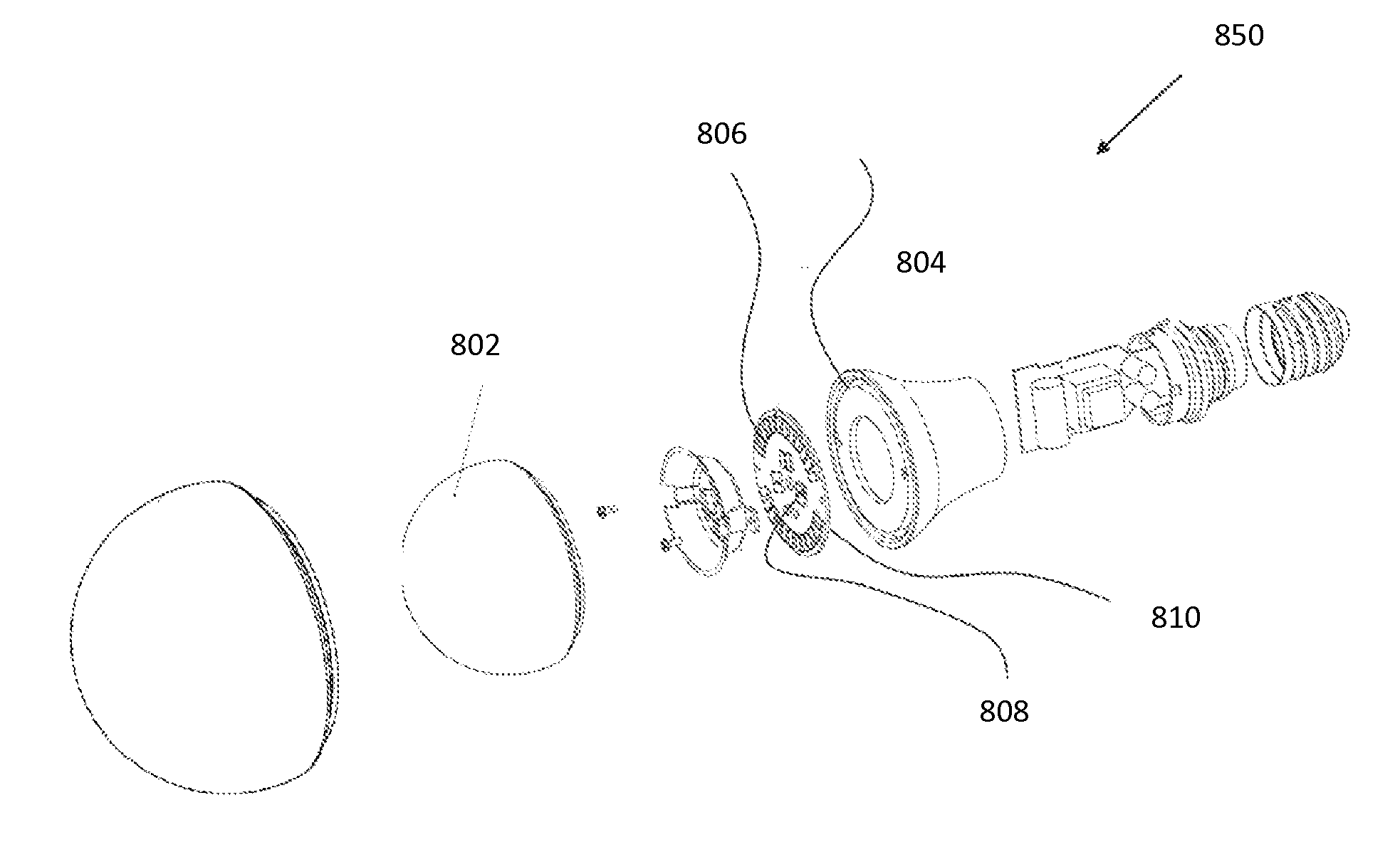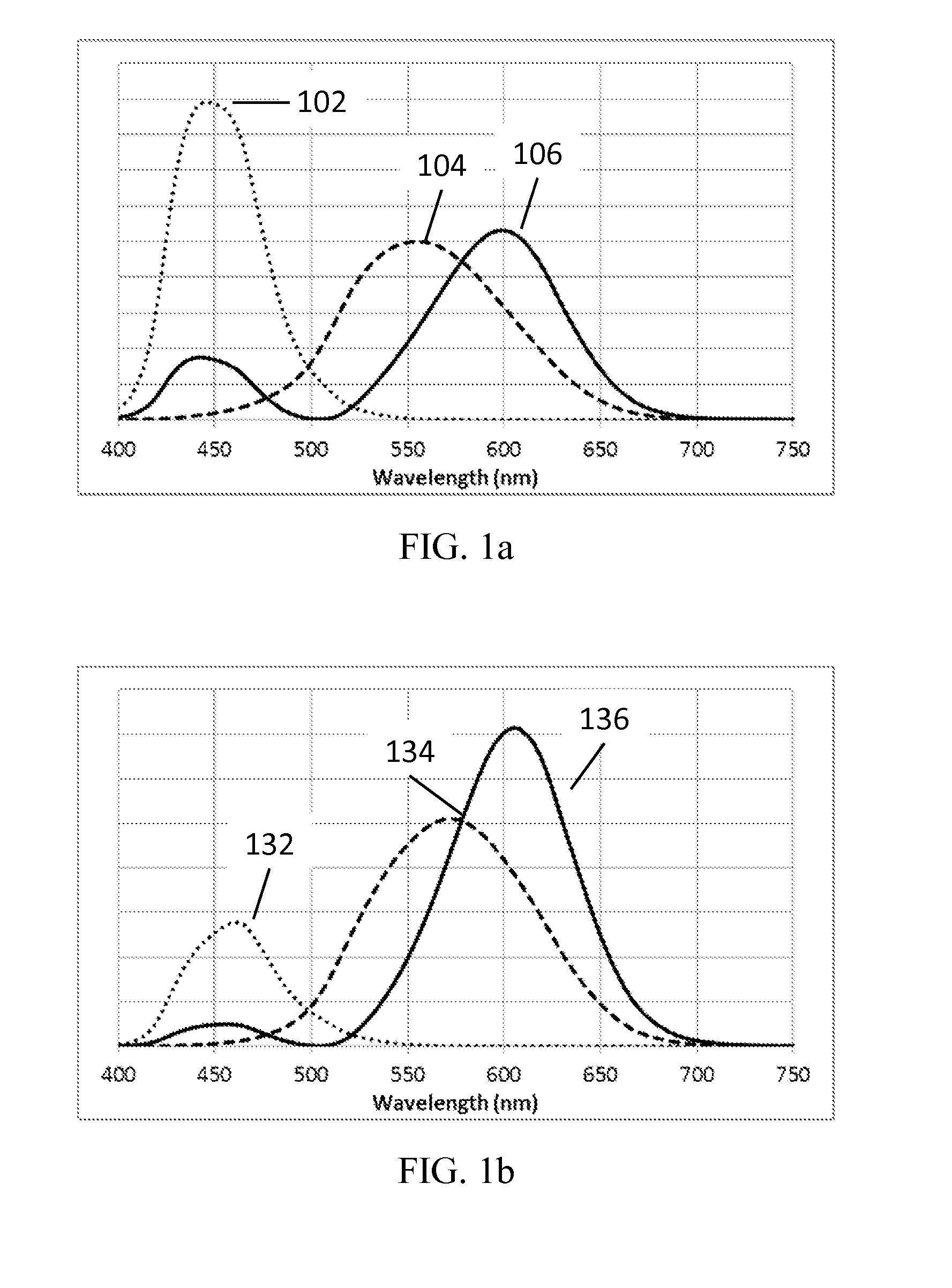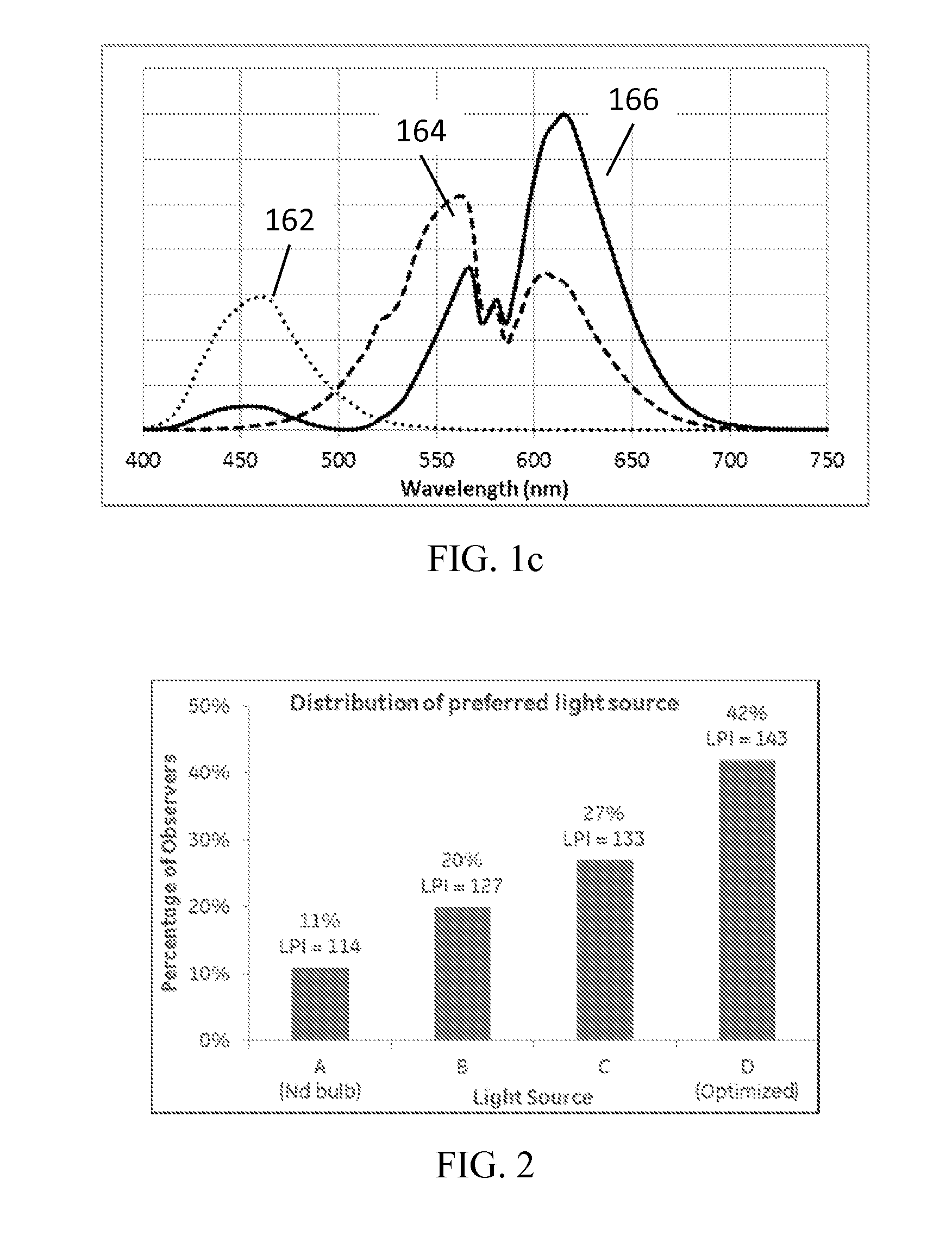Enhanced color-preference light sources
- Summary
- Abstract
- Description
- Claims
- Application Information
AI Technical Summary
Benefits of technology
Problems solved by technology
Method used
Image
Examples
second embodiment
[0145]In a BSY+R system, the LED light source 850 shown in FIG. 8b may include one or more groups of LEDs 806 and 808 that may each consist of a mixture of blue LEDs coated with BSY phosphor and deep red LEDs, where the portion of the blue light generated by the blue LED that is not absorbed by the phosphor materials, combined with the light emitted by the phosphor material and the red light emitted by the deep red LED provides light which appears to the human eye as being nearly white in color. The mixed-light spectrum is composed of a blue LED peak emission in the range of about 400 nm to about 460 nm, a BSY peak emission in the range of about 500 nm to about 580 nm created by the excitation of a green or yellow-green phosphor by the blue emission from the LED, and a deep red LED peak emission in the range of about 640 nm to about 670 nm. The spectrum may include a depression in the wavelength range between the blue LED emission and the green or yellow-green phosphor emission, and...
third embodiment
[0147]In a BSY+R system, the LED light source 850 shown in FIG. 8b may include one or more groups of LEDs 806 and 808 that may each consist of a mixture of blue LEDs coated with BSY phosphor, red LEDs, and also deep red LEDs, where the portion of the blue light generated by the blue LED that is not absorbed by the phosphor materials, combined with the light emitted by the phosphor material and the red light emitted by the red LED(s) and deep red LED(s) provides light which appears to the human eye as being nearly white in color. The mixed-light spectrum is composed of a blue LED peak emission in the range of about 400 nm to about 460 nm, a BSY peak emission in the range of about 500 nm to about 580 nm created by the excitation of a green or yellow-green phosphor by the blue emission from the LED, a red LED peak emission in the range of about 600 nm to about 640 nm, and a deep red LED peak emission in the range of about 640 nm to about 670 nm. The spectrum may include a depression in...
fourth embodiment
[0150]In a BSY+R system, the LED light source 850 shown in FIG. 8b may include one or more groups of LEDs 806 and 808 that may each consist of a mixture of blue LEDs coated with BSY phosphor and red LEDs, where the portion of the blue light generated by the blue LED that is not absorbed by the phosphor materials, combined with the light emitted by the phosphor material and the red light emitted by the red LED provides light which appears to the human eye as being nearly white in color. In addition, with reference to FIG. 8b, this embodiment includes a glass dome 802 impregnated with neodymium oxide that encapsulates the BSY+R light engine therein. The mixed-light spectrum is composed of a blue LED peak emission in the range of about 400 nm to about 460 nm, a BSY peak emission in the range of about 500 nm to about 580 nm created by the excitation of a green or yellow-green phosphor by the blue emission from the LED, and a red LED peak emission in the range of about 600 nm to about 64...
PUM
 Login to View More
Login to View More Abstract
Description
Claims
Application Information
 Login to View More
Login to View More - R&D
- Intellectual Property
- Life Sciences
- Materials
- Tech Scout
- Unparalleled Data Quality
- Higher Quality Content
- 60% Fewer Hallucinations
Browse by: Latest US Patents, China's latest patents, Technical Efficacy Thesaurus, Application Domain, Technology Topic, Popular Technical Reports.
© 2025 PatSnap. All rights reserved.Legal|Privacy policy|Modern Slavery Act Transparency Statement|Sitemap|About US| Contact US: help@patsnap.com



